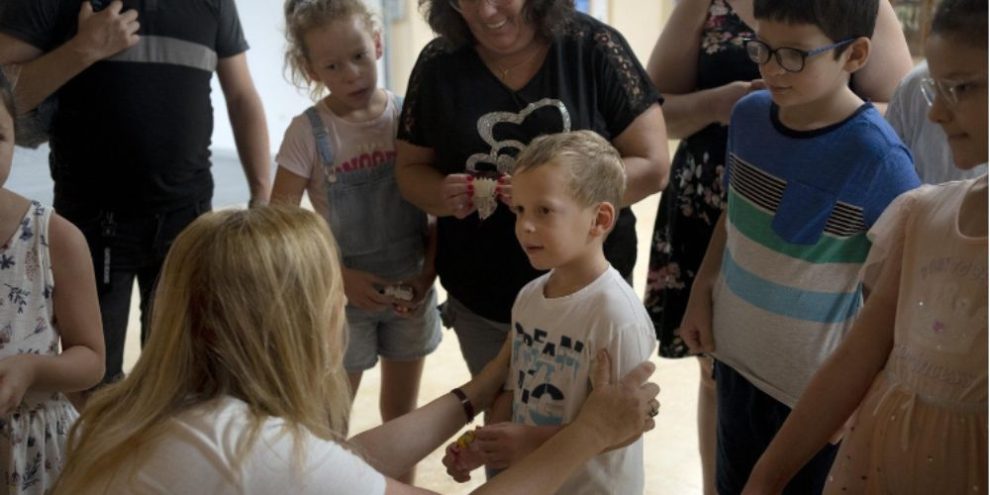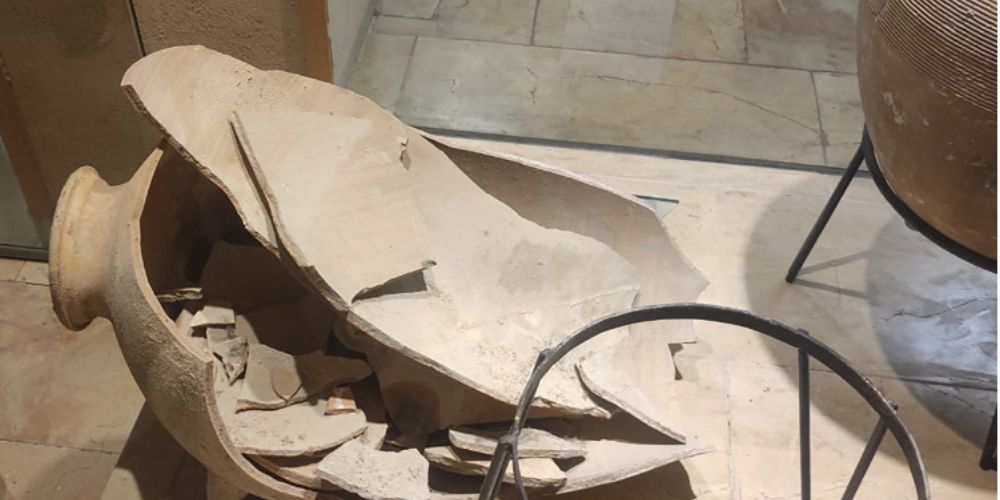
As her 4-year-old son perused the Israeli museum’s ancient artifacts, Anna Geller looked away for just a moment. Then a crash sounded, a rare 3,500-year-old jar was broken on the ground, and her son stood over it, aghast.
“It was just a distraction of a second,” said Geller, a mother of two from the northern Israeli town of Nahariya. “And the next thing I know, it’s a very big boom boom behind me.”
The Bronze Age jar that her son, Ariel Geller, broke last week, has been on display at the Hecht Museum in Haifa for 35 years. It was one of the only containers of its size and from that period still complete when it was discovered. It was likely used to hold wine or oil, and dates back to between 2200 and 1500 B.C.
What could be considered every parent’s worst nightmare became a learning experience Friday, as the Geller family returned to the museum, which is associated with Haifa University in northern Israel. Ariel gifted the museum a clay vase of his own and was met with forgiving staff and curators.
Alex Geller said Ariel — the youngest of his three children — is exceptionally curious, and that the moment he heard the crash last Friday, “please let that not be my child” was the first thought that raced through his head.
“I'm embarrassed,” said Anna Geller, who said she tried desperately to calm her son down after the vase shattered. “He told me he just wanted to see what was inside."
The jar was one of many artifacts exhibited out in the open, part of the Hecht Museum’s vision of letting visitors explore history without glass barriers, said Inbar Rivlin, the director of the museum.
She said she wanted to use the restoration as an educational opportunity and to make sure the Gellers — who curtailed their initial museum visit soon after Ariel broke the jar last week — felt welcome to return.

Nahariya, where the family lives, is in an area just south of Israel's border with Lebanon that has come under Hezbollah rocket fire for more than 10 months, in a conflict linked to the war in Gaza. The family has been visiting museums and taking day trips around Israel this summer to escape the tensions, Alex Geller said.
There were a lot of kids at the museum that day, and he said when he heard the crash he prayed that the damage had been caused by someone else. When he turned around and saw it was his son, he was “in complete shock.”
He went over to the security guards to let them know what had happened in hopes that it was a model and not a real artifact. The father even offered to pay for the damage.
“But they called and said it was insured and after they checked the cameras and saw it wasn’t vandalism they invited us back for a make-up visit,” Alex Geller said.
Experts were using 3D technology and high-resolution videos to restore the jar, which could be back on display as soon as next week.
“That’s what’s actually interesting for my older kids, this process of how they’re restoring it, and all the technology they’re using there,” Alex Geller said.
Roee Shafir, a restoration expert at the museum, said the repairs would be fairly simple, as the pieces were from a single, complete jar. Archaeologists often face the more daunting task of sifting through piles of shards from multiple objects and trying to piece them together.
Shafir, who was painstakingly reassembling the jar, said the artifacts should remain accessible to the public, even if accidents happen because touching an artifact can inspire a deeper interest in history and archaeology.
“I like that people touch. Don’t break, but to touch things, it’s important,” he said.





